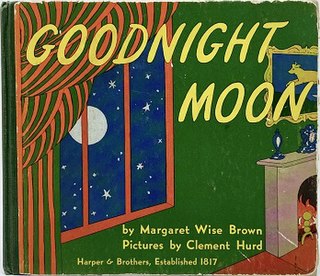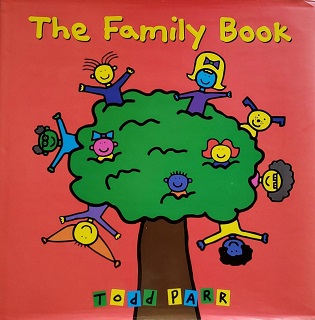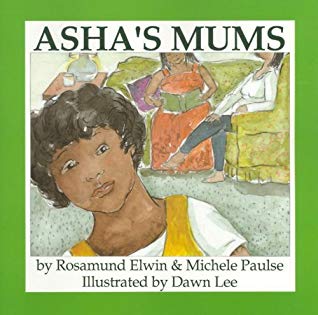
Goodnight Moon is an American children's book written by Margaret Wise Brown and illustrated by Clement Hurd. It was published on September 3, 1947, and is a highly acclaimed bedtime story.

Jenny Lives with Eric and Martin, originally Mette bor hos Morten og Erik, is a black-and-white picture book by the Danish author Susanne Bösche, published in 1981 in Danish and in 1983 by Gay Men's Press. It was perhaps the first English-language children's book to discuss male homosexuality. Jane Severance's When Megan Went Away (1979) preceded Jenny Lives with Eric and Martin.

Green Eggs and Ham is a children's book by Dr. Seuss. It was published by the Beginner Books imprint of Random House on August 12, 1960. The book follows Sam-I-am as he follows an unnamed man, repeatedly asking him if he would like to try some green eggs and ham before the man eventually tries it and likes it. Seuss began writing Green Eggs and Ham after his editor Bennett Cerf bet him $50 that he could not write an engaging children's book with a vocabulary of 50 words. Finding the challenge difficult, Seuss used notes, charts, and checklists to keep track of his progress. The book covers themes of conflict between individuals, though Seuss has said that it lacks any deeper meaning. Green Eggs and Ham was widely praised by critics for its writing and illustration, and the challenge of writing a book in 50 words is regarded as a success. The book has been the subject of multiple adaptations, including a television series of the same name in 2019.

Heather Has Two Mommies is a children's book written by Lesléa Newman with illustrations by Diana Souza. First published in 1989, it was one of the first pieces of LGBTQ+ children's literature to garner broad attention.

Lesléa Newman is an American author, editor, and feminist best known for the children's book Heather Has Two Mommies. Four of her young adult novels have been finalists for the Lambda Literary Award for Children's and Young Adult Literature, making her one of the most celebrated authors in the category.

Chamberlain v Surrey School District No 36, [2002] 4 S.C.R. 710, 2002 SCC 86, was a case in which the Supreme Court of Canada held that a local school board could not impose its religious values by refusing to permit the use of books that sought to promote tolerance of same-sex relationships.
Jill Murphy was a British author and illustrator of children's books. First published by Allison & Busby in 1974, she was best known for the Worst Witch novels and Large Family picture books, with sales amounting to several millions. Her books have also been adapted for stage and television. She has been called "one of the most engaging writers and illustrators for children in the land".
Sean Cassidy is a Canadian illustrator and writer of children's books. He started writing in 1995.

King & King is a children's picture book co-authored and co-illustrated by Stern Nijland and Linda De Haan. King & King tells the story of a young prince whose mother is forcing him to find his princess. However, after meeting many princesses, the prince falls in love with another prince. King & King was originally written in Frisian and has since been published in ten languages. The book's illustrations have received both positive and negative reviews, as has the storyline. The book has been analyzed for both its usefulness in the classroom and its challenges to social norms.

The Sissy Duckling is a children's picture book written by actor Harvey Fierstein and illustrated by Henry Cole. It is 40 pages long and intended for children ages 5–8.

Daddy's Roommate is a children's book written by Michael Willhoite and published by Alyson Books in 1990. One of the first children's books to address the subject of homosexuality, the story follows a young boy whose divorced father now lives with his life partner. The book's depiction of a gay household has led to its inclusion in many educational programs, and Willhoite's work was awarded a Lambda Literary Award in 1991.

The Family Book is a 2003 children's picture book written and illustrated by Todd Parr that details the daily lives of all kinds of families. Each unique family structure is depicted with vivid illustrations that complement the book’s themes of family diversity and inclusivity. The book has been adopted in various educational settings as a teaching tool to normalize the acceptance of various family forms. The Family Book has been challenged repeatedly and has sparked controversy in certain regions due to its inclusion of same-sex marriages as a family structure in the book.
Beth Webb is a British author of books for children and teenagers. She has written fifteen books, including the Star Dancer tetralogy, a fantasy series published by Macmillan, as well as the Fleabag Trilogy. She is also the co-founder of Books Beyond Words, and has illustrated more than twenty titles for adults with learning disabilities. She lives in Somerset, near Glastonbury Tor.

Brown Bear, Brown Bear, What Do You See? is a children's picture book published in 1967 by Henry Holt and Company, Inc. Written by Bill Martin Jr. and illustrated by Eric Carle, the book is designed to help toddlers associate colors and meanings to objects. The book has been widely praised by parents and teachers and placed on several recognition lists. In 2010, the book was briefly banned from Texas’ third grade curriculum due to a confusion between author of children's books Bill Martin Jr, and author of Ethical Marxism: The Categorical Imperative of Liberation philosopher Bill Martin.
Sasha Alyson is an American writer and businessman who started Alyson Publications in 1979. He later founded the Boston gay and lesbian newspaper Bay Windows (1983), the travel company Alyson Adventures (1995) and Big Brother Mouse, a literacy project in Laos.

Book Censorship in Canada is primarily limited to the control of which books may be imported. Canada Border Services Agency is able to block materials considered to be inappropriate from entering the country, although this practice has become less frequent since the Canadian Charter of Rights and Freedoms was put into place.

One Fish, Two Fish, Red Fish, Blue Fish is a 1960 children's book by Dr. Seuss. As of 2001, over six million copies of the book had been sold, placing it 13th on a list of "All-Time Bestselling Children's Books" from Publishers Weekly. Based on a 2007 online poll, the United States' National Education Association labor union listed the book as one of its "Teachers' Top 100 Books for Children".

Asha's Mums is a children's book written in 1990 by Michele Paulse and Rosamund Elwin and illustrated by Dawn Lee focusing on the topic of same-sex parents. Due to the subject matter, the book has been extremely controversial with a mixed critical reception, leading to a legal case in British Columbia over an attempt to ban the book.
Katrina Germein is an Australian early childhood teacher and author of children's picture books. In 1997 while working in a remote Aboriginal community as a teacher Germein wrote her first two picture books about her experiences. By 2023 Germein had written over 20 picture books with some published internationally.
A Mouse Told His Mother is a 1997 picture book by Bethany Roberts, with illustrations by Maryjane Begin. The book, about a mouse boy whose mother tries coaxing him to bed while he plans to take adventures, received critical acclaim.














